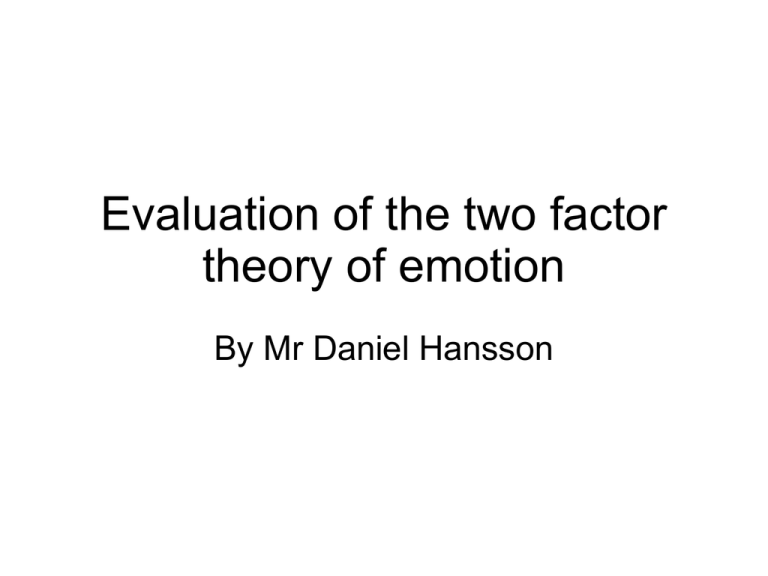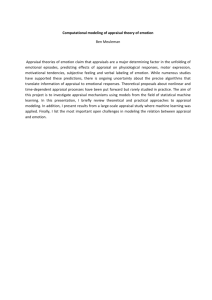Evaluation of the two factor theory of emotion
advertisement

Evaluation of the two factor theory of emotion By Mr Daniel Hansson Empirical support: Zillman & Bryant (1974) • Participants engaged in a strenuos physical exercise and then participated in a task, during which they were provoked by a confederate of the experimenter. Participants who had exercised responded more aggressively than those who did not Empirical support: Dutton & Aron (1974) • Male participants were asked to meet an attractive female interviewer in the middle of one of two bridges. One was a safe-looking bridge and one looked more dangerous (high and narrow). An attractive female researcher interviewed the male passers-by in the middle of the two bridges. She gave them her telephone number in case they wanted to ask about the results. Men on the less safe-looking bridge were more aroused by the height of the bridge, and were likely to confuse their feelings for being 'lovestruck'. They were then more likely to call her back, looking for a date. Other strengths • The theory was the first to emphasize the central role of appraisal in emotions • The original study was well controlled and standardized Limitations • Replicability. The original study has not been replicated (E.g. Marshall & Zimbardo 1979) • Ecological validity. The original study has problems with ecological validity. • The results of the original study does not completely support the theory • Zajonc (1984) argues that cognition and emotion involve separate systems and that emotion can occur without cognitive appraisal • Le Doux’s (1999) research suggests that emotional centres in the brain can receive information directly from the sensory areas without conscious appraisal











